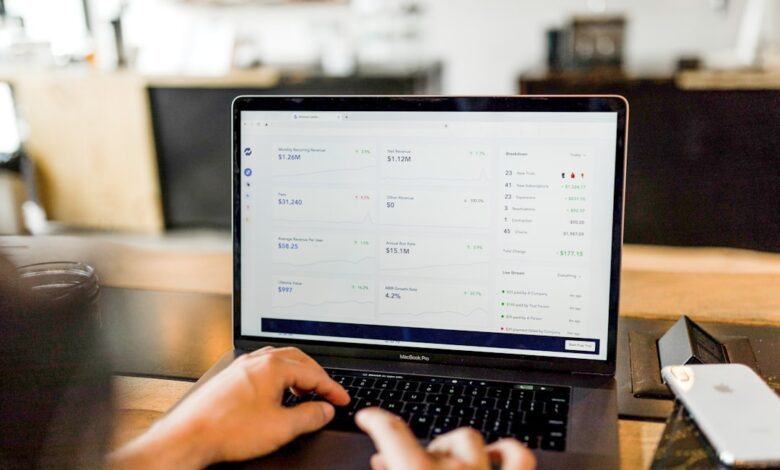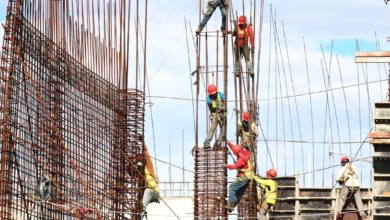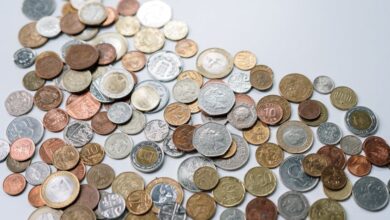Metals in Transition: Navigating Industrial Demand and Investment Trends in a Changing Economy

In today's rapidly evolving economic landscape, metals play a pivotal role not only in industrial applications but also as investment vehicles. This article delves into the multifaceted nature of various metals, highlighting their significance in both the industrial and investment arenas. We begin by exploring silver's dual role, examining its critical applications in technology and its appeal as a safe-haven asset. The fluctuations of copper prices serve as a barometer for global economic health, reflecting broader trends that impact markets worldwide. Additionally, we will investigate how the green energy revolution is driving demand for rare earth metals, essential for the technologies of the future.
The discussion will also encompass the investment potential of platinum versus palladium, considering their unique characteristics and market dynamics. As we analyze the importance of metals in diversifying investment portfolios, we will address how inflation influences the prices of both precious and industrial metals. Finally, we will look ahead to the future of aluminum in a sustainable economy and consider the impact of mining regulations on metal prices. Through this comprehensive examination, we aim to provide insights into how these factors intertwine, shaping the landscape of metal markets and investment opportunities.
- 1. "Silver's Dual Role: Industrial Applications and Investment Trends"
- 2. "Copper Prices as Economic Barometers: Understanding Global Indicators"
- 3. "Green Energy Revolution: The Rising Demand for Rare Earth Metals"
1. "Silver's Dual Role: Industrial Applications and Investment Trends"
Silver plays a pivotal role in both industrial applications and investment markets, making it a unique metal that attracts diverse interest from various sectors. On the industrial side, silver is renowned for its excellent electrical conductivity, thermal conductivity, and reflectivity, which make it an essential component in electronics, solar panels, and medical devices. The growing adoption of renewable energy technologies, particularly in solar power, has spurred demand for silver, as photovoltaic cells rely heavily on this metal for efficient energy conversion. Additionally, silver's antimicrobial properties have led to its use in healthcare products and water purification systems, further solidifying its status as a critical industrial commodity.
On the investment front, silver is often viewed as a safe-haven asset, similar to gold. Investors tend to flock to silver during times of economic uncertainty or inflation, seeking to hedge against currency devaluation. The metal's relatively lower price compared to gold makes it accessible to a broader range of investors, contributing to its popularity in both physical forms—such as coins and bars—and financial instruments like ETFs. Recent trends show that silver investment demand has been bolstered by retail investors, particularly during market volatility, as they seek to diversify their portfolios with tangible assets.
The interplay between silver's industrial and investment demand creates a dynamic market. While industrial applications account for a significant portion of silver consumption, fluctuations in investment demand can lead to price volatility. As industries continue to innovate and adapt to sustainability trends, the demand for silver in technology and renewable energy is expected to grow, potentially influencing its market value. Thus, understanding silver's dual role is essential for investors looking to navigate the complexities of the metal markets while considering broader economic indicators and trends.
2. "Copper Prices as Economic Barometers: Understanding Global Indicators"
Copper prices have long been regarded as a reliable indicator of global economic health, often referred to as "Dr. Copper" due to its ability to forecast economic trends. This reputation stems from copper's extensive use in various industries, particularly construction, manufacturing, and electronics. As a fundamental component in electrical wiring, plumbing, and renewable energy technologies, fluctuations in copper prices can signal changes in economic activity.
When demand for copper rises, it typically reflects increased industrial production and infrastructure investment, suggesting a growing economy. Conversely, declining copper prices may indicate a slowdown in economic growth or reduced industrial output. For instance, during periods of economic expansion, increased construction projects and manufacturing output drive up copper consumption, leading to higher prices. Conversely, during recessions or periods of uncertainty, demand can diminish, causing prices to fall.
Moreover, copper prices are influenced not just by domestic economic conditions but also by global factors. Economic growth in major consumer countries, such as China and the United States, significantly impacts copper demand. For instance, China's rapid industrialization and infrastructure development have historically driven up copper prices. Conversely, trade tensions, geopolitical issues, or economic slowdowns in these nations can lead to price drops.
In addition to demand, supply factors play a crucial role in pricing dynamics. Disruptions in mining operations, changes in export policies, or natural disasters can lead to supply shortages, causing prices to spike. Thus, monitoring both demand and supply factors provides a comprehensive view of the economic landscape.
Investors and analysts often track copper price movements as part of a broader strategy to gauge economic conditions. By understanding the relationship between copper prices and various economic indicators, stakeholders can make informed decisions regarding investments and economic forecasts. In summary, copper serves as a vital economic barometer, reflecting the interplay between industrial demand, global economic trends, and supply chain dynamics.
3. "Green Energy Revolution: The Rising Demand for Rare Earth Metals"
The shift towards renewable energy and sustainable technologies has ignited a significant increase in demand for rare earth metals, which are essential components in various green energy applications. These metals, including neodymium, dysprosium, and lithium, are critical for the production of high-performance magnets used in wind turbines, electric vehicle (EV) motors, and battery technologies. As countries globally commit to reducing carbon emissions and transitioning to cleaner energy sources, the reliance on these metals is expected to intensify.
The electrification of transportation is particularly noteworthy, as electric vehicles are projected to dominate the automotive industry in the coming decades. EVs require substantial amounts of rare earth metals, not only for their motors but also for the batteries that power them. This surge in demand is coupled with the growing adoption of renewable energy sources, such as solar and wind power, which further drives the need for rare earth elements in energy storage solutions and energy-efficient technologies.
However, the supply of rare earth metals poses challenges. Mining and processing these materials are often concentrated in specific regions, with China currently leading global production. This concentration raises concerns about supply chain vulnerabilities and geopolitical risks, which could impact the availability and pricing of these essential metals. Additionally, the environmental implications of mining practices underscore the need for sustainable sourcing and recycling initiatives.
As the green energy revolution progresses, the demand for rare earth metals is set to grow, creating both opportunities and challenges for industries and investors alike. The strategic importance of these materials in achieving a sustainable future highlights the necessity for innovation in extraction and recycling processes, as well as the development of alternative materials that can reduce dependency on rare earth metals.
In conclusion, the multifaceted roles of metals in today’s economy underscore their significance in both industrial applications and investment strategies. Silver, with its unique position as both a crucial industrial component and a sought-after investment asset, exemplifies the intricate interplay between market demand and economic trends. Similarly, copper prices serve as vital indicators of global economic health, reflecting broader market conditions and investor sentiment. The increasing reliance on green energy technologies further amplifies the demand for rare earth metals, signaling a shift towards sustainable practices that will shape future markets.
As investors consider their portfolios, the debate between platinum and palladium highlights the necessity of informed decision-making in the face of fluctuating metal prices. Additionally, inflation serves as a critical factor influencing both precious and industrial metal values, necessitating a strategic approach to investment. The future of aluminum, particularly within a sustainable economy, presents exciting opportunities, while the impact of mining regulations remains a crucial consideration in understanding price dynamics.
As we move forward, the role of metals in diversifying investment portfolios becomes increasingly important, offering resilience against economic uncertainties. Understanding these factors will equip investors and industry stakeholders alike to navigate the evolving landscape of the metals market, ensuring they remain well-informed and strategically positioned for future developments.





